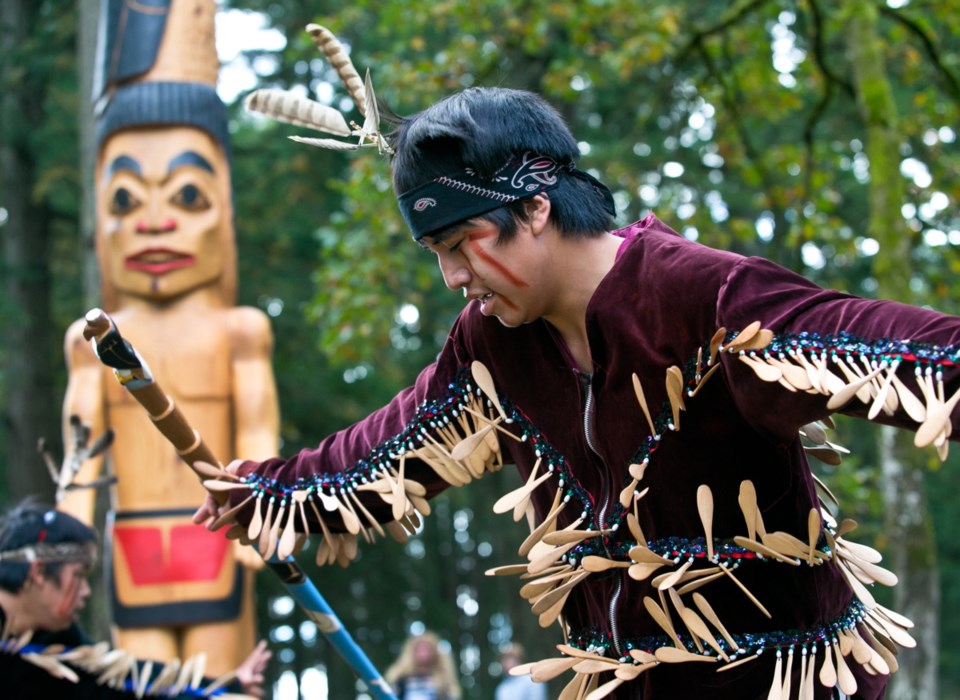The first totem pole at Royal Roads University has been named S’ael — the Sencoten word for harmony — and will stand in greeting to all for years to come.
The 25-foot pole carved by Tsawout artists Tom LaFortune and nephew Howard LaFortune Jr. was made from a fallen red cedar found on the grounds of the Colwood campus.
Royal Roads chancellor and board of governors chairman Wayne Strandlund, who commissioned the pole as a gift to the university, pointed out that a figure denoting welcome is one of its key elements. That welcome includes all of the special aspects of the university, he told a crowd gathered Tuesday for the pole’s unveiling.
“Welcome to these beautiful grounds, shared grounds,” said Strandlund, who has Metis heritage. “Welcome to a place of education, guidance, challenge, adventure, sharing peace and harmony.”
The pole includes three rings, each representing 25 years of education at the site — 55 as a naval and military college and 20 as a university.
The pole and its installation, valued at about $28,000, are part of 75th-anniversary celebrations, said Royal Roads president Allan Cahoon.
He said the spot chosen for the pole — among trees off University Drive — was one of a number considered.
Tom LaFortune said that having a pole at Royal Roads is important to him.
“I’ve got poles all over the world, but this one is so close to home,” he said. “My grandchildren can see it when they get older.”
He said he and his nephew worked on the pole for just over a month and attracted a steady stream of visitors watching them in action at the university boathouse.
“There were people from all over the world.”
He said poles don’t often get names, but it was decided this one would.
“Harmony,” he said. “Because everything went so well, right from the get-go.”
Strandlund, founder and CEO of Fisgard Capital Corporation, choked up at times during his address. He said the story of how the pole came to be has deep meaning for him.
“To me, it’s a prayer I hold in my heart day by day for Royal Roads and all its people, its forest, gardens, peacocks and never-ending dreams.”
He said as he watched the log being carved, it transformed into “a living thing.”
“The log, the tree fall, wasn’t dead,” he said.
“To me, it was sleeping and waiting many years for Tom to awaken it, to free its spirit.”
Strandlund also announced that he plans to establish an endowment at the university with an emphasis on both health and First Nations people.
“I am not sure of the form it will take, whether a scholarship or a bursary or some other form,” he said.
“It is my personal endowment. I have not defined its use at this point, but I assure you that the endowment will facilitate the advanced education of First Nations sisters and brothers, and wherever possible assist those who are disabled.”



